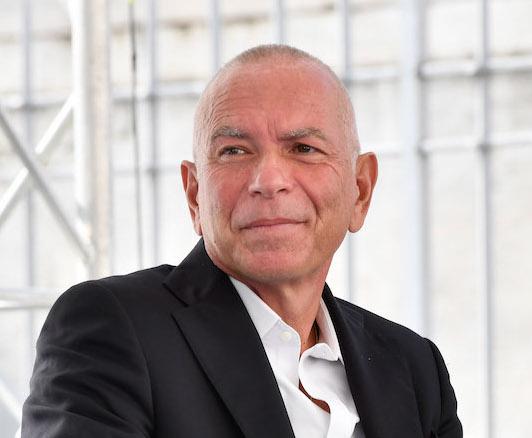Italian railway stations: modal exchange centers, where you can park your bicycle before taking the train, and upon arrival, reach the bus stop via protected pedestrian paths. Service hubs, not just commercial centers, useful in large cities for those who otherwise don’t have time to shop, but also as medical assistance centers, vaccination centers, or civil protection offices. The role of railway stations is constantly evolving: the FS Group has decided to enhance even those in smaller towns, according to local needs and in collaboration with municipalities. Driving Change discussed this with architect Antonello Martino, Head of Engineering and Station Investments, RFI – Rete Ferroviaria Italiana (FS Group).
What is Ferrovie dello Stato’s vision regarding the evolution of railway stations and their enhancement, also in terms of public and social utility?
Let’s start with history: many years ago, a plan was launched to redevelop stations that needed to be upgraded to ensure accessibility for people with reduced mobility. The project began with the busiest stations, those with the highest passenger traffic: around 630–640 out of the total 2,200 we have, handling about 90% of passenger traffic in Italy. These were the first to address, because by fixing those, we covered the majority of our users. Then the process extended to the remaining stations.
And what happened next?
In the following years, Covid and issues such as sustainable mobility and shared mobility—which have become central in both national and local transport policies—helped identify the station as a place at the heart of cities, with great potential as both a transport hub and a functional center. As a transport hub because in every station, even the smallest and least equipped, trains certainly pass through—and usually also a bus, maybe not right next to it or well connected, but still nearby. In medium, large, and especially major stations, where there are metro lines, shared mobility, buses, coaches, and BRT (bus rapid transit) systems, there are multiple connections. Strengthening this role as an intermodal hub has become a top priority.
And beyond transport?
The other aspect is that of a service hub. Large cities face the challenge of upgrading and connecting major centers such as hospitals, universities, and schools. But when there’s already a transport hub, if space is available, it can be used for various functions. Over the years, many stations have become commercial hubs—Rome, Milan, Naples, Venice, Mestre… The list could be extended, though not by much, because to turn a station into a commercial hub you need a high number of users passing through the area throughout the day. Often, however, stations are overcrowded only in the morning, at lunchtime, and in the evening—commuter and student hours. In those cases, placing stores in stations doesn’t work, because people living in small or medium-sized towns will likely buy clothing or glasses in neighborhood shops or in the city center, where they usually go. It’s instead a useful service for people living in big cities, who leave home early when shops are closed and return late when they’re closed again. Passing through the station, they can make the purchases they wouldn’t otherwise have time for. So all the projects we’ve developed over the years aim not only to comply with full accessibility regulations but also to strengthen stations as transport hubs and centers of functionality.
What about stations that aren’t suitable as commercial hubs?
The number of stations that can become shopping centers is quite limited. For the others, we are experimenting with different options: where a store wouldn’t work, a student residence for university students might, or a medical assistance center, or a vaccination hub, or other non-commercial services. These don’t generate major commercial revenue but serve important public needs for people passing through the station in the morning, afternoon, or evening. All our enhancement projects follow this approach. To achieve this, it’s essential to set up shared working groups with local authorities and stakeholders, since urban and transport policies are decided by municipalities, not us. Therefore, with municipalities and regions, we define how best to connect stations to cities, not only in transport terms but also urbanistically, to ensure greater integration and make stations an increasingly central part of urban life.
Regarding smaller-town stations, those under 15,000 inhabitants, how do you approach them?
In small towns, adding retail shops to stations doesn’t work. A bar might work, and to that end, we often redesign the surrounding square, sometimes making it fully or partially pedestrian. This way, the station bar isn’t just for travelers grabbing a coffee before their train—it becomes a meeting place for locals who come to the station not to travel but to socialize. There are also other important functions, from civil protection to healthcare facilities, and other socially oriented activities rather than commercial ones. For us, that’s always a good outcome, because station safety is ensured through technology—security cameras—and through law enforcement, both state and our own (FS Security was created specifically to enhance station safety). But safety is also ensured through a constant presence of users and activities throughout the day, making the station a lived space rather than an abandoned one. Architectural design plays a big role too: the quality of spaces, design, and lighting can be analyzed to avoid dark or hidden areas and ensure real and perceived safety.

What is the current status of the “Stazioni del Territorio” (Local Stations) project, promoted by FS Group companies and focused on railway stations in municipalities with fewer than 15,000 inhabitants, aimed at transforming them into multifunctional centers?
Last year, we inaugurated the first three “territorial stations”: Popoli-Vittorito in the province of Pescara, and Urbisaglia and Matelica in the province of Macerata. Work is currently underway at Loreto station (Marche), Antrodoco (Lazio), and Baiano di Spoleto (Umbria). Between the end of this year and the beginning of next, we’ll begin work at Arona (Novara, on Lake Maggiore), Passignano sul Trasimeno (Umbria), and Albizzate (Varese). These are co-designed projects with municipalities, which help us decide what functions to include inside the stations.
 And what about the so-called “crater” stations—those located in seismic zones, as a sort of extension of this project?
And what about the so-called “crater” stations—those located in seismic zones, as a sort of extension of this project?
The so-called “crater” is a specific funding subset, mainly tied to the Ministry of Infrastructure and Transport’s program contract for strengthening railway infrastructure, which includes dedicated chapters for stations. There are also other funding sources, such as those allocated for the Jubilee in Rome and government funds for areas hit by the 2009 and 2016 earthquakes. In this case, we proposed interventions for the stations of Fabriano, Tolentino, Macerata, and Ascoli Piceno in the Marche region; Baiano di Spoleto and Spoleto in Umbria; Rieti and Antrodoco in Lazio; and L’Aquila in Abruzzo. Since these are potentially critical seismic areas, we are strengthening station buildings structurally. In all stations, whether inside or outside the “crater,” we conduct vulnerability analyses and structural reinforcement to improve seismic safety and comply with evolving regulations.
Can you give an example of these regenerated stations?
At Popoli-Vittorito station, in collaboration with the municipality, several healthcare-oriented functions were introduced. The municipality had expressed, from the start of the project, the need for spaces for seasonal vaccinations and specialist medical visits, as these were lacking locally. We therefore renovated the passenger buildings according to these needs, equipping them accordingly.
Can you give an example of how stations are evolving today in Italy?
Stations are at the heart of cities: mobility needs are increasing, but now we need integrated mobility. There’s growing space for shared mobility, sustainable mobility, pedestrian and cycling mobility. More and more often, we add bicycle stations and last-mile connections to cycle paths. It often happens that cities build bike lanes that reach near the station but lack the final link. For example, we’re working on the outdoor areas of Pesaro station, one of the cities with the highest number of bike paths. Yet, until recently, in front of that station you would see a kind of bicycle graveyard—bikes left randomly, chained to poles—because there was no proper place to park them. We’re trying to rationalize these spaces by creating dedicated bicycle facilities, to promote intermodality in an orderly way.
Can you give another example?
The focus on modal exchange between transport modes: there’s almost always a bus stop in front of stations, but the pedestrian connection between the station exit and the bus stop is often not protected. We must always think about mothers with strollers, elderly people, or those with mobility issues—the need for clear and safe pedestrian routes is crucial. That’s why, when designing projects, we collaborate with municipalities to rationalize modal exchange. Increasingly, users judge their travel experience not by individual transport segments but by the entire journey—from home to destination. You can have a perfect train ride—on time, fast, comfortable—but if reaching the station or your final stop involves unsafe walking routes or poor public transport connections, the overall travel quality suffers. That’s why it’s important to intervene—even beyond the station perimeter—in cooperation with local authorities.

